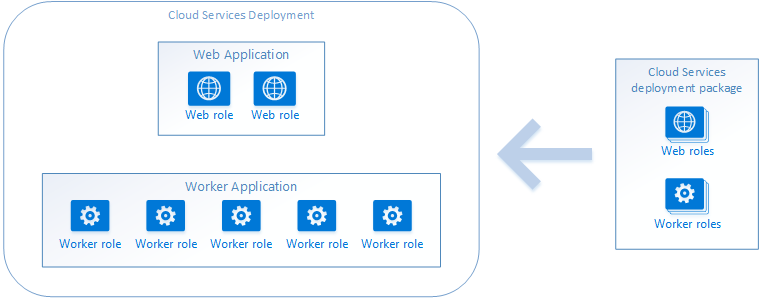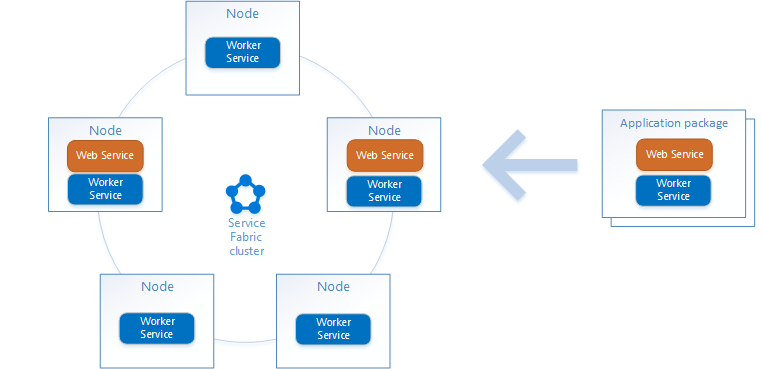Compare Azure Cloud Services to Service Fabric -When to go for migration?
While building a native Microsoft Azure application, there is always a dilemma of choosing architecture models. The two main prevalent architecture models are Azure Cloud Services and Azure Service Fabric. Out of these two that you can leverage, there is always a question mark of making a choice and when they should be used. To remove this quandary it is important to know their complete architecture and compare the two major azure architecture models: Azure cloud services vs Azure service fabric. This will allow you to get a clear picture and make the task of selection much easier, as there are so many Azure cloud contributions in the platter from Microsoft. Case in point, it looks like that every single month they turn up with fresh services and add them to their load of offerings. For this very reason, it is essential to have a perfect understanding of these services.
Aiming mainly on architectural and design differences between Cloud Services and Service Fabric, let us make an attempt to describe these cloud architectural models in simple terms. This will help in the proper and a clear understanding of these models and what to choose from Azure for your following enterprise venture! First and foremost, let us explain these two entities so that there is a proper description of these architectural models, and then we will evaluate both these models.
What is Azure Service Fabric?
Visions and a general idea of Azure Service Fabric
Azure Service Fabric is a scattered systems architecture model. It allows a platform to implement Microservices architecture in Microsoft Azure. This huge scale platform makes some of the infrastructure trials in Microsoft Azure Cloud Services easier. It signifies the following generation middleware platform for constructing enterprise cloud-scale applications. In this model, applications run on a pool of Virtual Machines, known as Cluster. Diverse parts of the cloud applications can be scaled individually, and the software developers have more agility to provide the way out. Also, dissimilar programming models are available for Azure Service Fabric. Azure Service Fabric is comparatively a novel offering from Microsoft, but it is been used internally in Microsoft cloud for application development and cloud offerings like Microsoft Azure SQL Server, Skype and other services. With so many features to offer, it is a trustworthy and fast service to provide enterprise scale applications to prospective clienteles. What is more, Service Fabric is responsible for hosting containers providing a platform on top. At this time it backs windows server containers and Docker containers on Linux. As a result, it offers you the elasticity to set up your codes as a container in Azure Service Fabric and track them beside built-in Azure Service Fabric methods in lone cluster! It is a next-generation cloud application platform meant for very accessible, extremely trustworthy distributed applications. It keeps on offering a lot of fresh features. In turn, all these fresh features, introduced every now and then are used for packing, arranging, improving, and handling distributed cloud applications. Let us understand the advantages and features offered by both of them to get a clear picture of both the models to avoid the confusion of picking up any model, as per the need.
What are the benefits of deploying Azure Service Fabric?
Is Azure Service Fabric beneficial – is it worth the deployment?
Azure service fabric application model offers a lot many profits. They are as follows:
- Offering quick setting up, it saves a lot of time and energy. As building VM cases in point takes a lot of time. In this type of model architecture, VMs are merely arranged as soon as a cluster is made that hosts the Service Fabric application platform. At this juncture, application packages can be organized to the cluster in a rapid fashion.
- This application platform consists of a scattered application management, hosting distributed applications. It also offers in dealing with the lifecycle freely of the hosting VM.
- The most important profit is Service fabric platform is that it can run on any machine giving an edge over its counterparts. Windows Server or Linux machines, whether it’s Azure or on-premises, it can run anywhere. It offers an abstraction layer over the fundamental set-up. This layer allows the application to run on diverse settings.
- What is more, it also offers high-density hosting. As we all know that, VM only hosts one workload in the case of cloud services platform. Whereas in the case of Service Fabric platform, applications are not attached with the VMs that run them. This means that a huge number of applications to a lesser number of VMs can be deployed. By doing so, the whole rate for bigger deployments decreases saving a lot of money.
Comparing Azure Cloud Services vs. Azure Service Fabric
Comparison of cloud services and Azure service fabric clarified – when to select either of them?
Azure Service Fabric is a runtime service. Running on windows and Linux, it is an application platform level. On the other hand, Cloud Services is a scheme for arranging Azure-managed VMs with workloads closely knitted. This can be well understood with the diagrams shown below for both of them.
Service Fabric clusters can be created in a lot of settings, together with Azure and on premises. Maximum Cloud Service applications are composed of more than one layer. In the same way, a Service Fabric application is made up of a lot of services.
A lot of dynamics are involved that differentiates the two platforms and which one to use for your software mission. Let us probe into them one by one. Here they are:
- Firstly, you need to see whether the project is the result of an undeveloped development. If something needs to be added or updated or the enterprise project is started from the scratch. Ever since Azure Service Fabric took over from Azure Cloud Services, it makes sense to go for Azure Service Azure Cloud Services model must be used when you there is no need of commencing from scratch. Also, when the migrations of the codes to Azure Service Fabric is not needed then keep on using that model for the rest of your application.
- Also, for developing scalable products or applications need competent professionals. Hence, the present skillsets of the team members must be taken care of by providing them training, if needed, otherwise keep on using the same technology of cloud services.
- As the Azure Cloud services does not back up high-tech architectural model, there is a probability of an application with a more complex design. Then, in this case, Service fabric model fits the bill.
- For developing a hybrid environment with containers in the cloud, Azure Service Fabric seems to the best choice for you. In an Azure Service Fabric, all the procedures and additional accessible containers can be run alongside consistently and can be measured centred on your requirements.
- With Azure Service Fabric offering a naming service for you, communication between instances is done easily. This leads us to a modest communication model as compared to Azure Cloud Services.
Conclusion
This is a simple guide to make you understand the architecture and advantages for making the migration easier without changing the overall architecture of your application. This can only be achieved when the overview along with the architecture of both of them is understood well and in depth. For successful porting this is suggested as the conversion and changing of the packing and configuration files to service fabric model would be much easier offering myriad profits. In a nutshell, migration of the cloud applications to service fabric is pretty easy, however, when to go for it must be understood prior to the migration. However, your choice must be centred on which application/product you are demanding to form, exactly how much time you want, and when you need to release? Select any one as per the need and parameters out of these two discrete platforms, following diverse development models.






